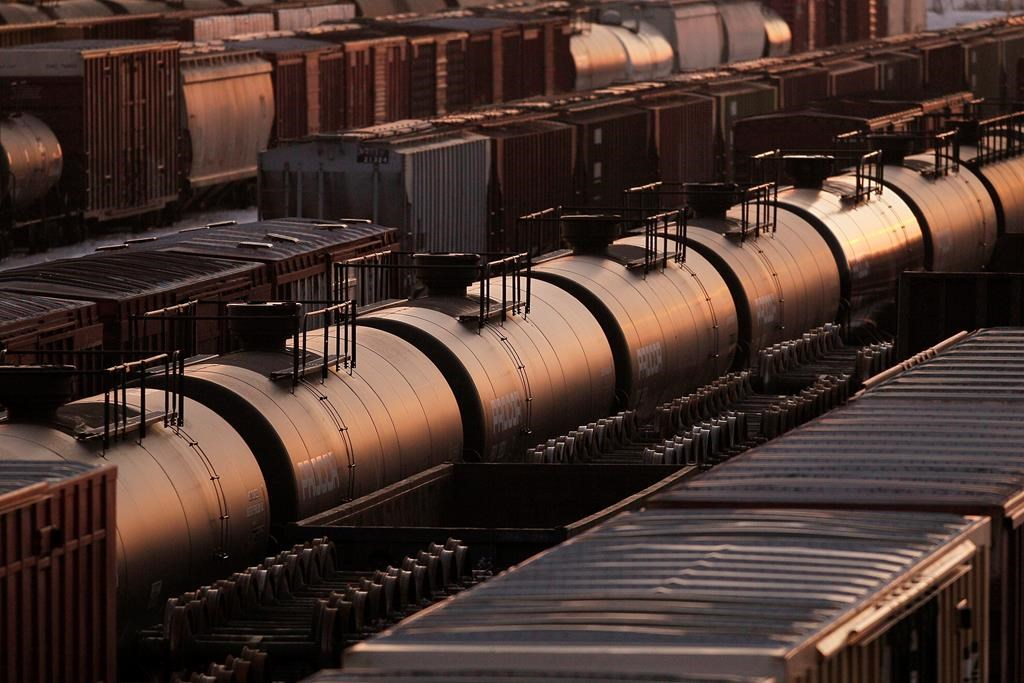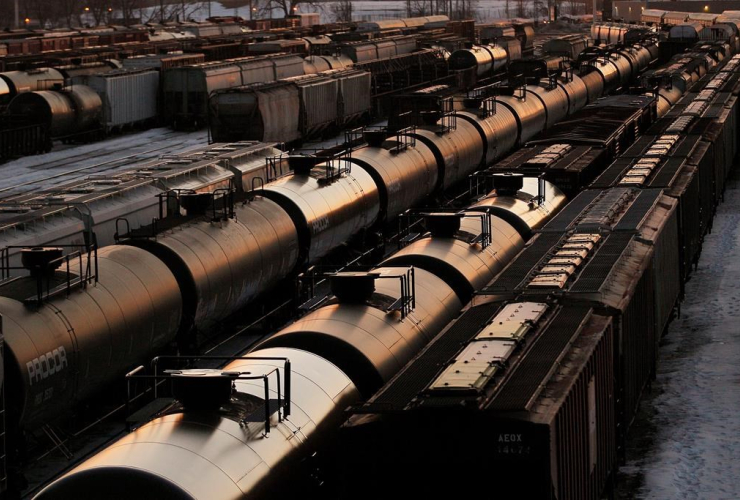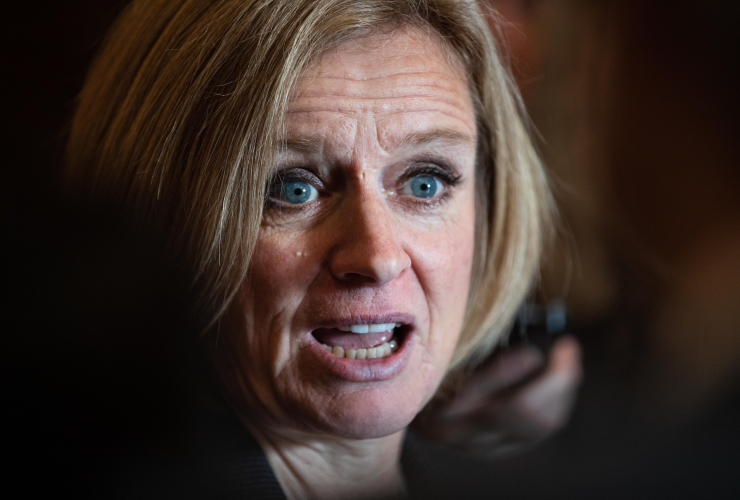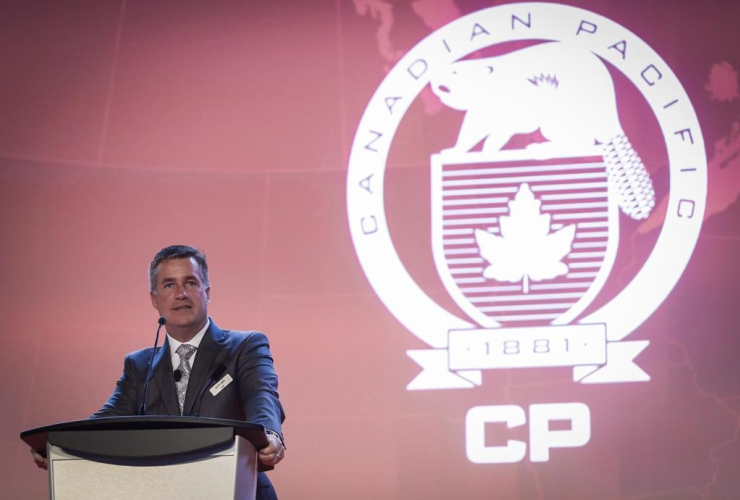Canada's largest oil producers are calling on the Alberta government to reward companies that commit to adding crude-by-rail capacity by easing their oil curtailment levels.
The proposal would allow crude oil export capacity to increase at the same time that barrels are being produced to fill that capacity, Suncor Energy Inc. CEO Mark Little said, while taking part in a panel discussion with representatives of four other large Calgary-based oil producers at the TD Securities Calgary Energy Conference.
The result would be that Alberta producers would be able to get better prices for higher volumes of oil, which would swell the government treasury with more resource royalties and taxes, he said.
"The big issue that everyone's fearful of is you lift oil (quotas) and no rail shows up, or you lift rail (capacity) and no oil shows up, so we're trying to figure out, is there a way we can work with the government that would be a step towards getting rid of curtailment," Little told reporters.
"If you allowed people to increase their production if they brought incremental rail, then all of a sudden every company that's curtailed is trying to find rail contracts."
Little said he hopes the plan would allow oil production curtailments to be retired by the end of 2019.
The government will consider the idea, said Alberta Energy Minister Sonya Savage at a later news conference, noting that CIBC Capital Markets has been hired to undertake a "divestiture program" of the contracts.
"We definitely wouldn't rule that out, but we need to see more details and we need to see what the full figure looks like, which probably won't happen until the fall," she said.
Alberta enacted the program to cut oil output starting in January after discounts on Western Canadian Select bitumen-blend crude soared to as much as US$50 per barrel compared with U.S. benchmark West Texas Intermediate prices last fall.
The situation was blamed on the inability of pipeline capacity to keep up with growing output from the oilsands.
The curtailment program was to gradually be reduced and end by late 2019, but Alberta Premier Jason Kenney has said it may need to continue into 2020 if storage levels in the province remain high.
The production limit in August was set at 3.74 million bpd, a reduction of 180,000 bpd from the initial January curtailment level of 325,000 bpd. The first 10,000 bpd a company produces are exempt from production limits, meaning only 29 of more than 300 producers in Alberta are subject to the limits.
Meanwhile, the Kenney government has also indicated it wants to turn over 120,000 barrels per day of crude-by-rail contracts negotiated by the previous NDP government to the private sector.
Canadian Natural Resources Ltd. is in talks with the government about those contracts, said executive vice-chairman Steve Laut, adding it has had to halt production of about 80,000 bpd because of the curtailment program.
"We are very interested in taking rail capacity," said Laut during the panel discussion.
"It would make a lot of sense to lift curtailment as you bring on rail and, for those who commit to rail, you should get some kind of increased allocation on your curtailment."
Cenovus Energy Inc. could add 80,000 bpd of production if curtailment ends and if it decides to begin producing from its 50,000-bpd Christina Lake oilsands expansion project, which has been completed but is on hold until market access problems are resolved, said CEO Alex Pourbaix.
He said the company intends to increase its rail shipping to 100,000 bpd by year-end and is spending $30 million to increase its Edmonton-area crude-by-rail terminal by 20 per cent to about 120,000 bpd capacity.
Imperial Oil Ltd. cut its crude-by-rail shipments to near zero in February because it said curtailment had narrowed the differences between Canadian and U.S. prices by so much it didn't make sense to use the high-cost rail transport system.
On the panel, Imperial senior vice-president Theresa Redburn said the company still is not using all of its 200,000 bpd of crude-by-rail capacity, which she said represents about one-third of the 600,000 bpd of western Canadian capacity.
She said the company is engaged in confidential talks with the government to increase its rail use.
With a file from Lauren Krugel in Calgary





Comments